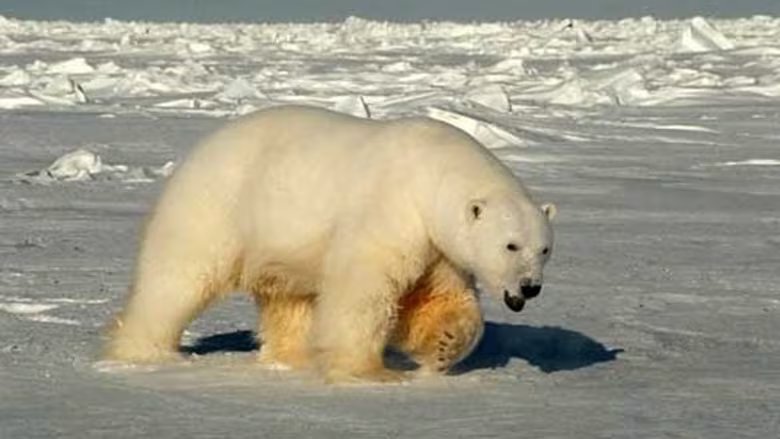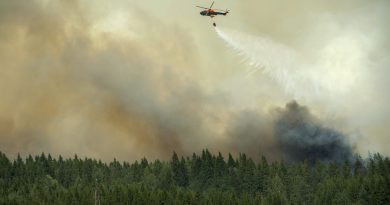Avian flu detected in polar bear in Alaska

Wildlife officials in Alaska have confirmed the first known case of a polar bear that died from avian flu — highlighting growing concerns about the H5N1 strain’s potential spread among northern mammals.
Dr. Robert Gerlach, Alaska’s state veterinarian, said the young bear’s carcass was recently found by a biologist working in the state’s remote North Slope region. Swab samples from the dead animal confirmed that it had been infected with the highly pathenogenic H5N1 strain.
“We have had birds detected with the avian influenza virus in that area. So we’re making the assumption that the bear had come up onto land and had probably scavenged one of the dead or dying birds, and gotten exposed that way,” Gerlach said.
The current global outbreak of H5N1 has led to the loss of millions of birds. The strain was first detected in Canada in 2021 and has devastated poultry farms, and spread to some birds of prey as well as some mammals, experts say.
Gerlach said Alaska is trying to monitor the presence and spread of H5N1 in the state, but it can be difficult in such a vast territory.
“If an animal dies, especially in the wild up here, it can be scavenged rather quickly by other animals. And so it really is a challenge, trying to find these cases,” he said.
Gerlach said some bird species in Alaska have been “severely” affected by the outbreak, including eagles and magpies, as well as waterfowl.

He said this outbreak seems much different to the last global outbreak of avian flu nearly a decade ago. The previous one “seemed to dissipate rather quickly,” Gerlach said.
“In this case, we are seeing it really hang on and being adaptive to stay very influential in wild birds, as well as impacting you know, our domestic poultry.”
H5N1 can also infect humans, though such cases are rare and “mostly occur after close contact with infected birds or highly contaminated environments such as poultry farms or live bird markets,” according to Health Canada.
Still, Gerlach says it’s hard to predict how the global outbreak will evolve. Some scientists worry that it could eventually turn into another pandemic among humans.
“Currently the risk to people is very, very low,” Gerlach said.
“But as this virus adapts or mutates, will it change and cause more of a problem? And that’s one thing that it’s going to be very important that animal health and public health officials work together to study and understand this virus, to go ahead and be prepared.”
Tracking infections ‘certainly is a challenge,’ says Yukon vet
Across the border in the Yukon, territorial veterinarian Jane Harms said she wasn’t surprised to learn of the infected polar bear in Alaska given the virus’s spread among mammals elsewhere.
Yukon, however, has not seen much evidence of infection in the territory’s wildlife so far. Harms said the last known infection was in a wild bird last April. There has also been one known case in a red fox, a little over a year ago.
As in Alaska, it can be hard to track infections in the territory’s remote regions, Harms said. Wildlife officials often rely on members of the public to notify them of any sick or dead animals they see while out on the land.
“But it certainly is a challenge,” she said.
Harms said the greatest concern right now is for wild bird populations, because it’s clear the disease can be transmitted easily from bird to bird.
The risk of widespread, ongoing transmission between mammals is less clear, she said.
“I don’t think we’ve ever seen quite this scope in terms of the number of mammals that have been infected or the range of species. And so we now can add polar bears to that list — but it’s already getting to be a fairly long list and that’s relatively unprecedented,” she said.
“And anytime you have a situation that’s sort of unprecedented with regard to wildlife health, that is definitely of concern and something that we are are watching quite closely.”
Related stories from around the North:
Canada: Tuberculosis rising after COVID-19 pandemic redirected services, say health officials, CBC News
Greenland: Greenland to reduce services amidst staffing shortages in health care system, Eye on the Arctic
Sweden: Many regions in Sweden struggling to cover hospital jobs over the summer, Radio Sweden
United States: Coronavirus hurting Alaska attempt to reduce tuberculosis, The Associated Press



